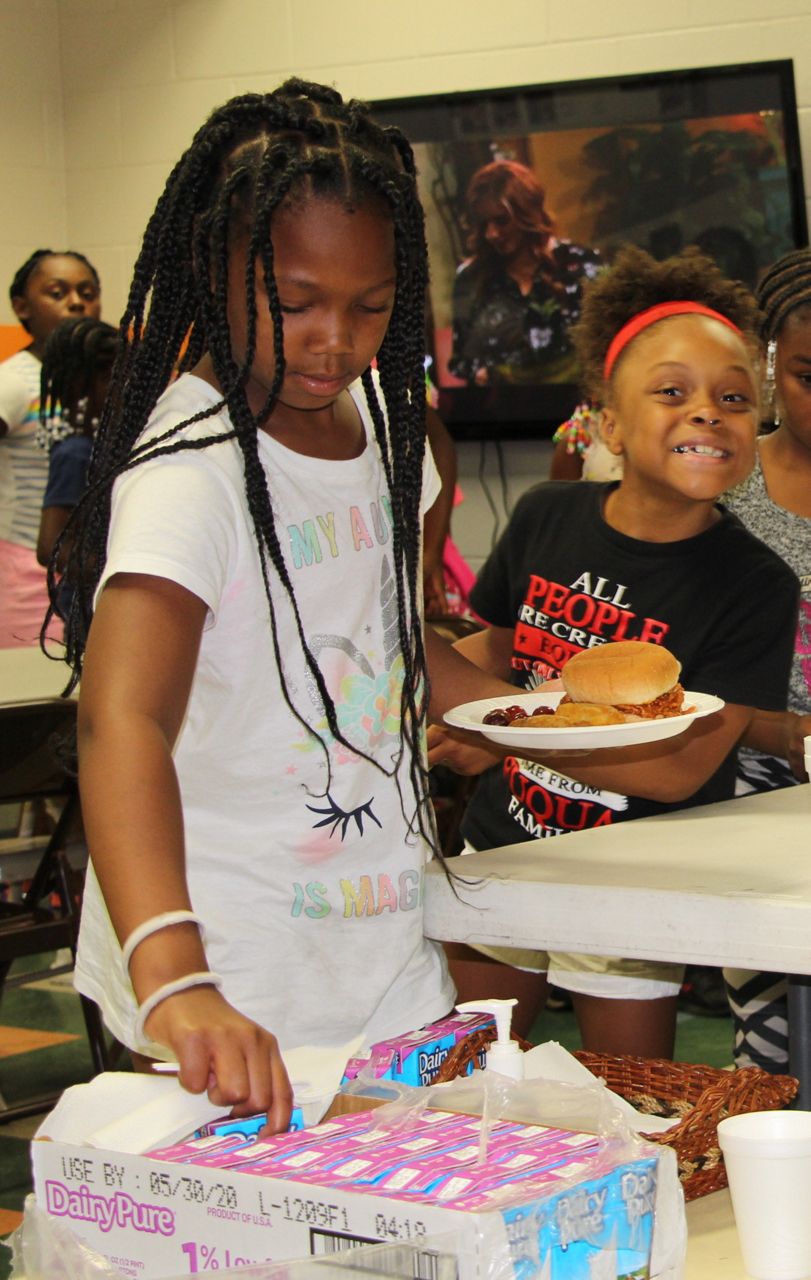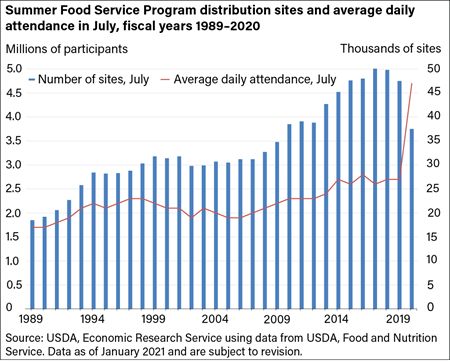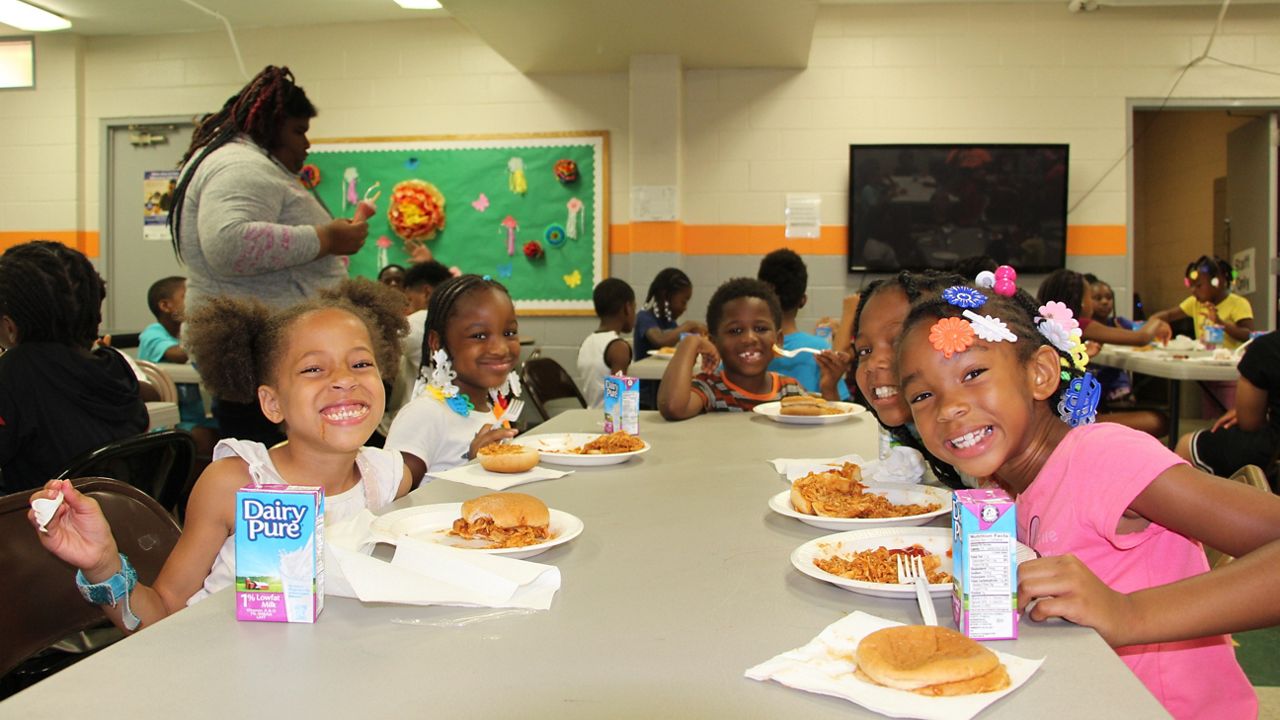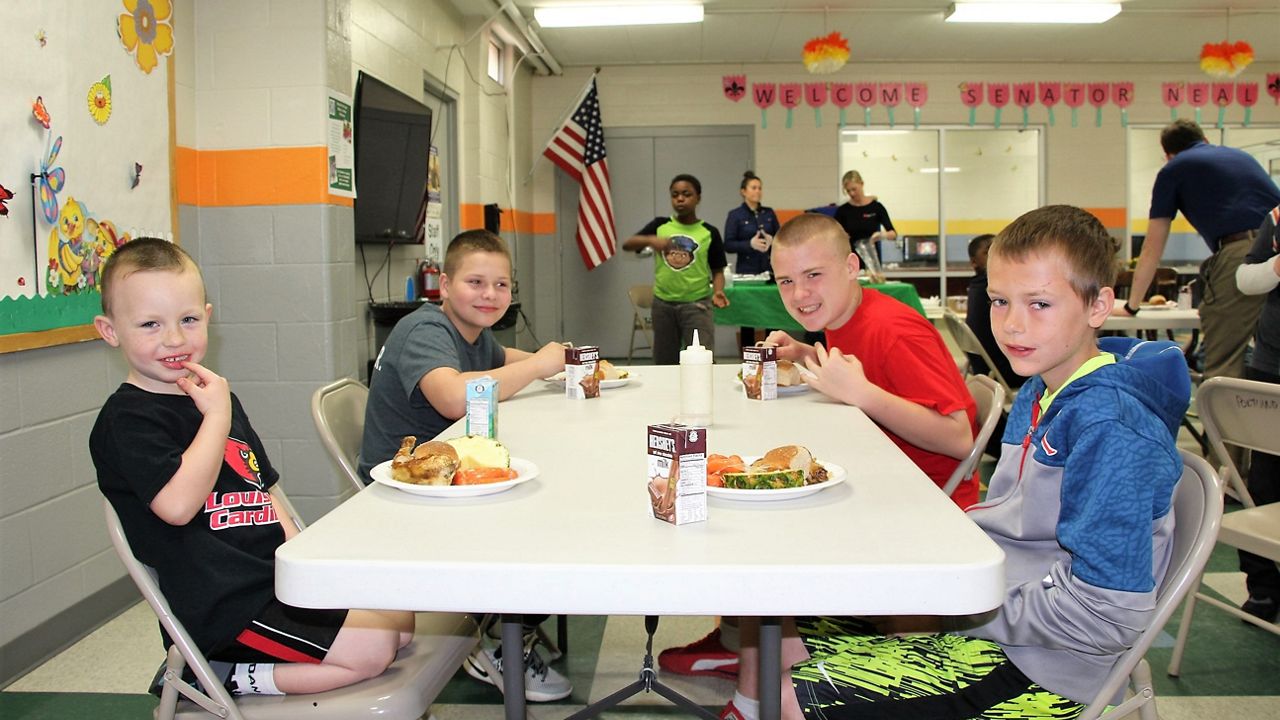LEXINGTON, Ky. — Thousands of children across Kentucky rely on their schools to serve a warm meal for breakfast and lunch, and even a snack during the day. But what happens when the school year ends?
What You Need To Know
- Number of meals served boosted by pandemic
- Program is more than 45 years old
- Nearly 3,000 meal sites around Kentucky
- Locations are places with high percentages of food-insecure schoolchildren
The Kentucky Department of Education and the United States Department of Agriculture’s Summer Food Service Program (SFSP) served over 8.7 million meals in Kentucky in the summer of 2021 at nearly 3,000 sites across the Commonwealth. While the director of the program said the ongoing COVID-19 pandemic boosted that number, the need to provide a nourishing breakfast, lunch, snacks and dinner for growing children is always there, especially in the summer.
While summer is still a few months away, the state education department is already asking for schools and nonprofit organizations to sponsor the SFSP. Meal sites are typically in public areas such as schools, community centers, parks, family housing complexes and locations operated by faith-based organizations.
Cathy Gallagher, manager of the Summer Food Service Program at the Kentucky Department of Education Division of School and Community Nutrition, said the SFSP is suffering from an “identity crisis.”

“The program has been around over 45 years, but not everybody knows about it,” she said. “It provides nutritious meals and follows a meal pattern during the summer when children are out of school. It fills the gap between when kids get out of school in the spring to when they go back in the fall.”
Meals provided by the SFSP are at open sites in areas where at least 50% of the children are eligible for free, or reduced school meals and where half of the children come from families with incomes at or below 185% of the federal poverty level. In response to the COVID-19 pandemic, the USDA waived these restrictions in 2020 and 2021, allowing for the distribution of free meals through SFSP in all areas. Any child may have a meal at an open site and income is not verified. Gallagher doesn’t know if pre-pandemic guidelines will be back in place this coming summer.
Program guidelines require sponsoring organizations to be a public, or nonprofit private school food authority, including school districts; a public or nonprofit private residential summer camp; a unit of a local, municipal, county or state government; or other private nonprofit organizations.
Groups interested in learning more about helping the program can attend free online training by registering here. Gallagher said about 200 organizations partnered with the program in 2021 and “a few” rural counties in south-central and western Kentucky are without meal sites.
“If a child is in a county without a meal site, the family could go to a neighboring county. It’s not always the most convenient, but that’s feasible. That’s possible. Children could even be in Fulton County and go across the border into Tennessee to a site and have a meal. They’re open to anybody. If children from Missouri are visiting grandparents in Bowling Green, they can go to a meal site and eat.”
A meal site is a physical location, approved by the state agency, where program meals are served during a supervised time period. Sponsors may serve meals at one or more sites.
Nearly one in five children in Kentucky will struggle with hunger during their childhood, which means 20% of all Kentucky children live in a household struggling to put food on the table, according to KY Kids Eat.

“Sponsors are the local organizations that run the meal program, and that’s usually a school district or it could be a nonprofit organization or a government organization,” Gallagher said. “Sponsors have to agree with the program guidelines and attend training, complete some paperwork and submit an application. They purchase the food, they prepare the meals and they serve the meals. They keep records of what they’ve served and file those with us, which goes to the USDA and they’re provided a reimbursement.”
Residents of Kentucky 18 or under are eligible for the SFSP.
Kentucky’s two largest counties, Jefferson and Fayette, have high percentages of food-insecure children. There are nearly 66,000 children aged 18 and under in Fayette County and 10,570 are considered food insecure, a total of 22.4%. Jefferson County has more than 172,000 children under age 18 and nearly 29,000 are considered food insecure, a total of 16.8%.
The COVID-19 pandemic forced changes in the summers of 2020 and 2021. The number of meals served through SFSP and expenditures on the program was 8.9 and 8.7 times greater than in 2019.

These increases can be attributed to rising food needs during the pandemic and USDA’s response to meet those needs, which included waivers expanding the scope and coverage of SFSP. The program expanded rapidly in the early months of the pandemic, serving about 564.4 million meals nationwide from March through May 2020. Comparatively, 1.2 million meals were served over the same period in 2019. The increase is the result, in part, of allowing to-go meals during the pandemic the past two summers, Gallagher said.
“The program requires the child gets a meal and stay and eat the meal. It’s called the congregate requirement where the children eat in a congregate setting,” she said. “The advantage to that is it is known the meals are going to who they are intended for because it is a program for children under 18. During the pandemic, that wasn’t practical, so families could come to pick up meals and leave, sometimes meals for several days. Those were USDA flexibilities extended during the pandemic. Whether those are going to be available this summer, we’re still waiting to hear.”
Sign up here to sponsor or volunteer for the SFSP. Sponsors must be organizations fully capable of managing a food service program and follow federal and state regulations. Sponsors must also be financially and administratively responsible for running their program.
Gallagher said when this year’s program is fully implemented, one may text “food” or “Comida” to 304304 to locate a meal site near them and hours of operation.



